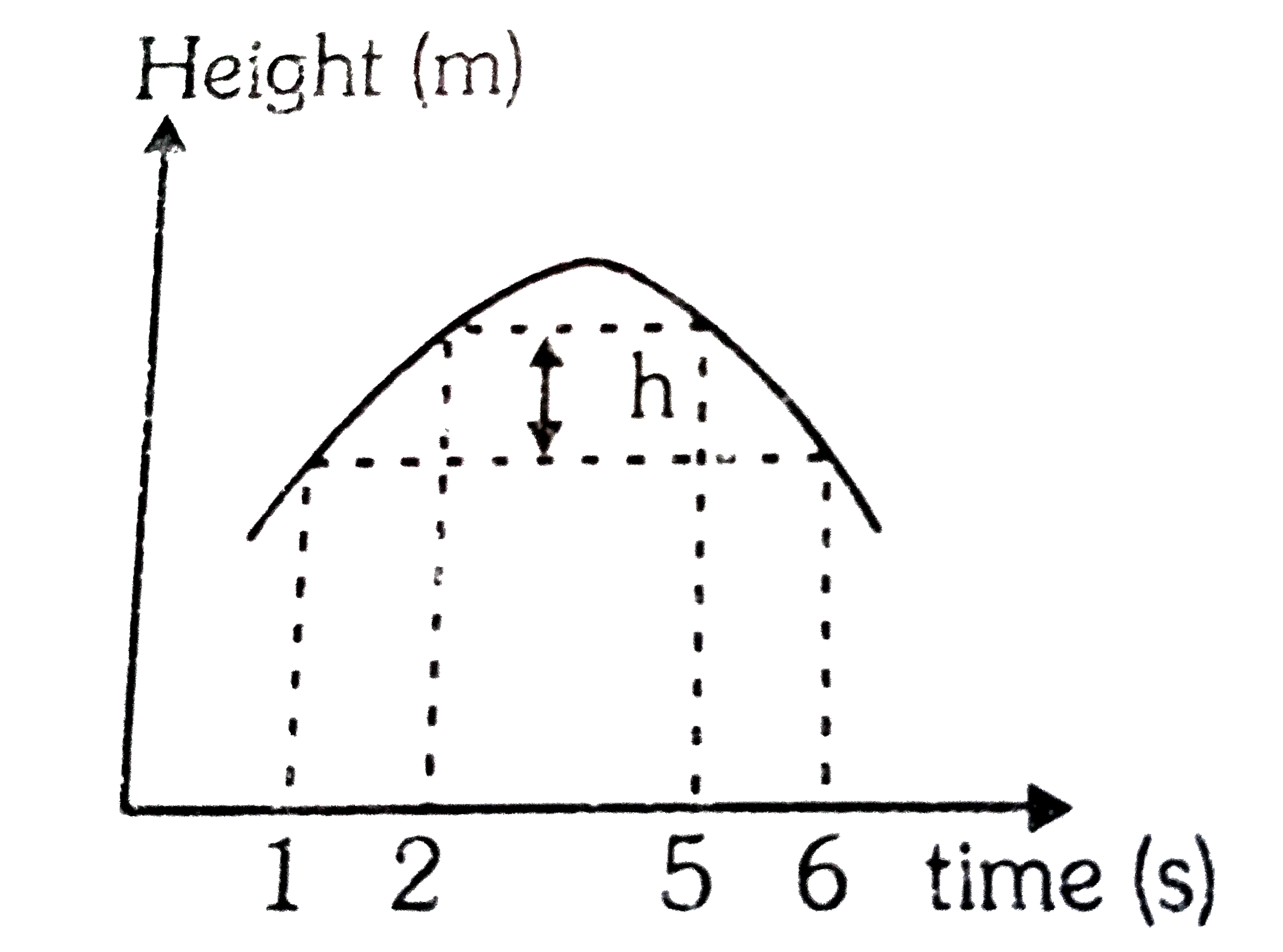An object is thrown vertically upward with a certain initial velocity in a world where the acceleration due to gravity is 19.6m/s2. The height to which it rises is _____ that to which the object would rise if thrown upward with the same initial velocity on the Earth. Neglect air resistance.
1.77m/s2
3.60m/s2
2.98m/s2
7.36m/s2
The correct Answer is:B
To solve the problem, we need to compare the heights reached by an object thrown vertically upward with the same initial velocity in two different gravitational fields: one with an acceleration due to gravity of 19.6ms² and the other with 9.8ms² (Earth's gravity).
Step 1: Understand the relationship between height and acceleration due to gravity
When an object is thrown upward, it will rise to a maximum height where its final velocity becomes zero. The height (H) attained by the object can be determined using the equation of motion:
v2=u2+2aH
Where:
- v = final velocity (0 m/s at maximum height)
- u = initial velocity
- a = acceleration (negative for gravity)
- H = height attained
Step 2: Set up the equations for both scenarios
1. For the world with g=19.6m/s²:
0=u2−2(19.6)H1
Rearranging gives:
H1=u22×19.6
2. For Earth with g=9.8m/s²:
0=u2−2(9.8)H2
Rearranging gives:
H2=u22×9.8
Step 3: Compare the heights H1 and H2
From the equations derived:
- H1=u239.2
- H2=u219.6
Step 4: Establish the relationship between H1 and H2
To find the relationship between H1 and H2:
H1H2=u239.2u219.6=19.639.2=12
Thus, we find that:
H1=12H2
Conclusion
The height to which the object rises in the world with g=19.6m/s² is half that of the height it would rise if thrown upward with the same initial velocity on Earth.
Final Answer
The height to which it rises is half that to which the object would rise if thrown upward with the same initial velocity on the Earth.
---
When an object is thrown upward, it will rise to a maximum height where its final velocity becomes zero. The height (H) attained by the object can be determined using the equation of motion:
- v = final velocity (0 m/s at maximum height)
- u = initial velocity
- a = acceleration (negative for gravity)
- H = height attained
1. For the world with g=19.6m/s²:
0=u2−2(19.6)H1
Rearranging gives:
H1=u22×19.6
0=u2−2(9.8)H2
Rearranging gives:
H2=u22×9.8
From the equations derived:
- H1=u239.2
- H2=u219.6
To find the relationship between H1 and H2:
H1H2=u239.2u219.6=19.639.2=12
H1=12H2
The height to which the object rises in the world with g=19.6m/s² is half that of the height it would rise if thrown upward with the same initial velocity on Earth.
The height to which it rises is half that to which the object would rise if thrown upward with the same initial velocity on the Earth.
Topper's Solved these Questions
- BOOK - RESNICK AND HALLIDAYCHAPTER - MOTION ALONG A STRAIGHT LINEEXERCISE - PRACTICE QUESTIONS ( More than One Correct Choice Type )6videos
MOTION ALONG A STRAIGHT LINE
- BOOK - RESNICK AND HALLIDAYCHAPTER - MOTION ALONG A STRAIGHT LINEEXERCISE - PRACTICE QUESTIONS ( Linked Comprehension )15videos
MOTION ALONG A STRAIGHT LINE
- BOOK - RESNICK AND HALLIDAYCHAPTER - MOTION ALONG A STRAIGHT LINEEXERCISE - PROBLEMS53videos
MOTION ALONG A STRAIGHT LINE
- BOOK - RESNICK AND HALLIDAYCHAPTER - MAGNETIC FORCEEXERCISE - Practice Questions (Integer type )7videos
MAGNETIC FORCE
- BOOK - RESNICK AND HALLIDAYCHAPTER - MOTION IN TWO AND THREE DIMENSIONSEXERCISE - PRACTICE QUESTIONS (MATRIX-MATCH)10videos
MOTION IN TWO AND THREE DIMENSIONS
Similar Questions
Knowledge Check
- Question 1 - Select One
An object is thrown upward with a vertical velocity of 128 ft./sec. It will return in
A64 secondsB16 secondsC8 secondsD4 seconds - Question 2 - Select One
Question Stimulus
A stone is thrown vertically upwards with an initial velocity of 30ms−1. Acceleration due to gravity g=10ms−2. The maximum height reached by the stone isA30 mB4.5 mC45 mD90 m - Question 3 - Select One
A ball is thrown upwards . Its height varies with time as shown in figure. If the acceleration due to gravity is 7.5m/s2, then the height h is
 A10mB15mC20mD25m
A10mB15mC20mD25m
A ball thrown vertically upwards with an initial velocity of 1.4m/s. The total displcement of the ball is
View SolutionA ball thrown vertically upwards with an initial velocity of 1.4 m/s returns in 2s. The total dispalcement of the ball is
View SolutionTwo bodies are thrown vertically upwards with their initial velocity in the ratio 2:3. Then the ratio of the maximum height attained by them is
View SolutionA pebble is thrown vertically upwards from a bridge with an initial velocity of 4.9 m/s. It strikes the water after 2s. If acceleration due to gravity is 9.8m/s2(a) what is the height of the bridge? (b) with what velocity does that pebble strike the water?
View SolutionA pebble is thrown vertically upwards from a bridge with an initial velocity of 4.9 m/s. It strikes the water at 2s. If acceleration due to gravity is 9.8 m/s2 (a) what is the height of the bridge ? (b) with what velocity does pebble strike the water ?
View Solution


